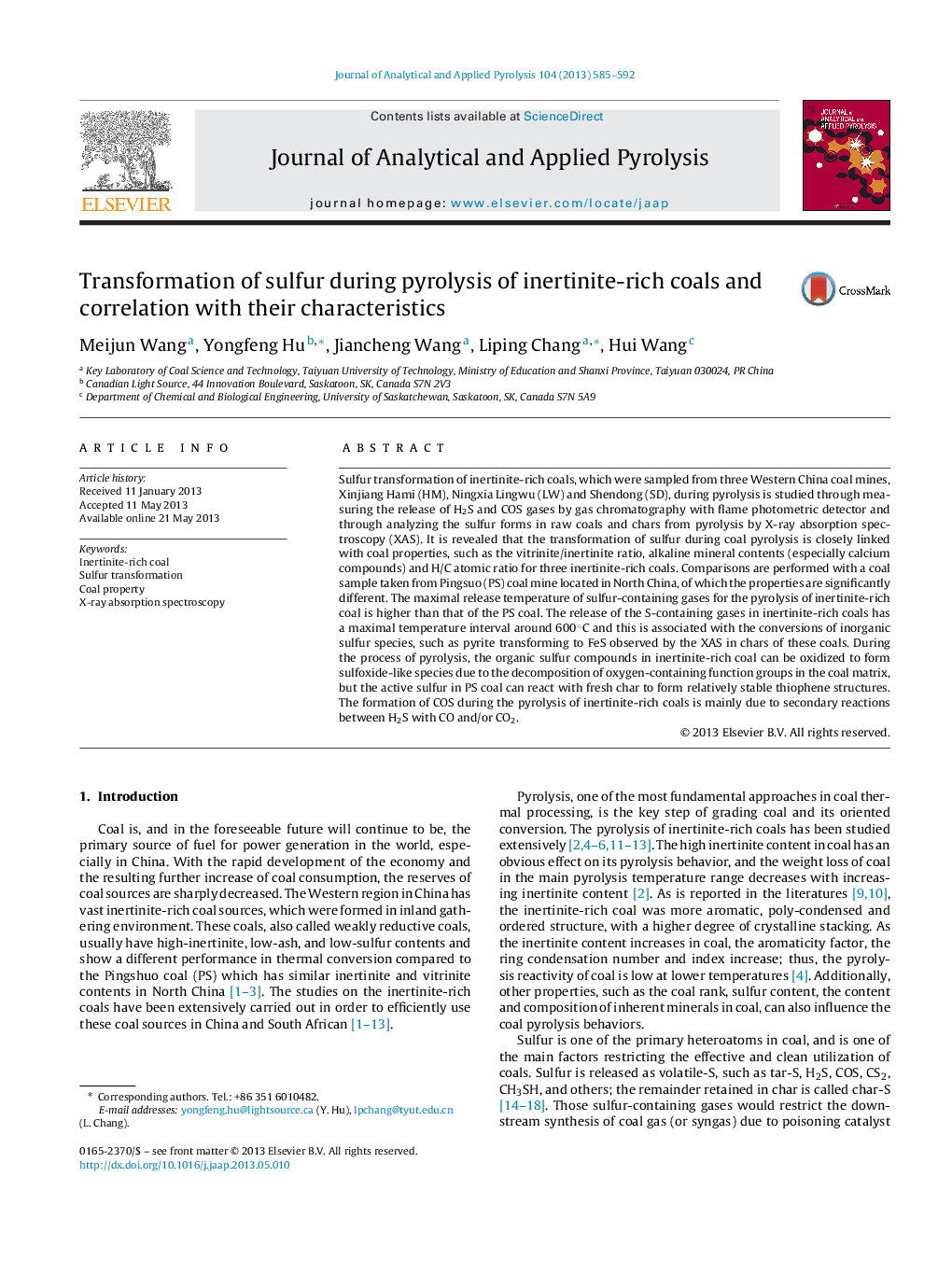| کد مقاله | کد نشریه | سال انتشار | مقاله انگلیسی | نسخه تمام متن |
|---|---|---|---|---|
| 1196826 | 1492973 | 2013 | 8 صفحه PDF | دانلود رایگان |

• Combined study of S transformation during pyrolysis by GC-FPD and XAS.
• S-containing gases during pyrolysis monitored by GC-FPD.
• S in raw coals and chars from pyrolysis analyzed by S K-edge XAS.
• S release in inertinite-rich coals is closely related to inertinite and mineral contents.
Sulfur transformation of inertinite-rich coals, which were sampled from three Western China coal mines, Xinjiang Hami (HM), Ningxia Lingwu (LW) and Shendong (SD), during pyrolysis is studied through measuring the release of H2S and COS gases by gas chromatography with flame photometric detector and through analyzing the sulfur forms in raw coals and chars from pyrolysis by X-ray absorption spectroscopy (XAS). It is revealed that the transformation of sulfur during coal pyrolysis is closely linked with coal properties, such as the vitrinite/inertinite ratio, alkaline mineral contents (especially calcium compounds) and H/C atomic ratio for three inertinite-rich coals. Comparisons are performed with a coal sample taken from Pingsuo (PS) coal mine located in North China, of which the properties are significantly different. The maximal release temperature of sulfur-containing gases for the pyrolysis of inertinite-rich coal is higher than that of the PS coal. The release of the S-containing gases in inertinite-rich coals has a maximal temperature interval around 600 °C and this is associated with the conversions of inorganic sulfur species, such as pyrite transforming to FeS observed by the XAS in chars of these coals. During the process of pyrolysis, the organic sulfur compounds in inertinite-rich coal can be oxidized to form sulfoxide-like species due to the decomposition of oxygen-containing function groups in the coal matrix, but the active sulfur in PS coal can react with fresh char to form relatively stable thiophene structures. The formation of COS during the pyrolysis of inertinite-rich coals is mainly due to secondary reactions between H2S with CO and/or CO2.
Journal: Journal of Analytical and Applied Pyrolysis - Volume 104, November 2013, Pages 585–592